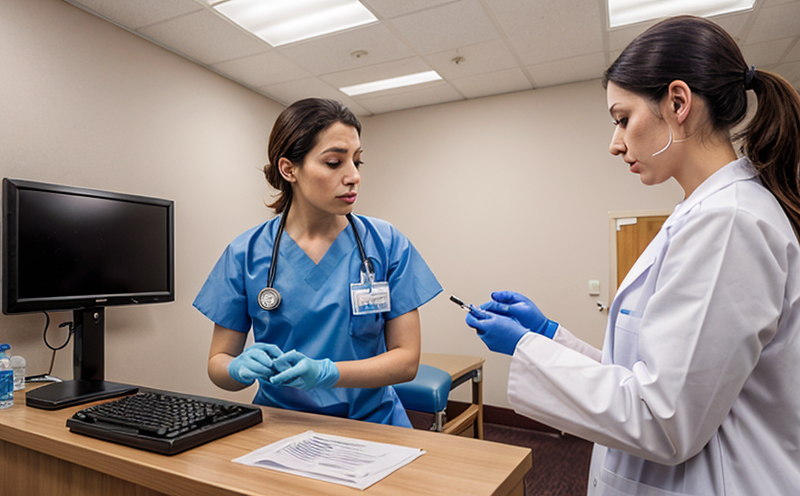Corticosteroid Residue Testing in Animal Feed
Understanding corticosteroids is crucial for the food safety and quality management sectors. Corticosteroids are a group of steroid hormones that include cortisol, hydrocortisone, and dexamethasone. They play vital roles in human health by regulating metabolism, immune function, inflammation, and other essential physiological processes. However, their use in animal feed for non-therapeutic purposes is strictly regulated to prevent the transfer of corticosteroid residues into meat, milk, and eggs.
In recent years, there have been increasing global efforts to ensure that food safety standards are met. Regulatory bodies like the US FDA, EU Commission Regulation 1843/2014, and the FAO have established guidelines to monitor corticosteroid residues in animal feed. Compliance with these regulations is not only a legal requirement but also an assurance of product safety.
The testing for corticosteroid residues involves several critical steps, including sample collection, extraction methods, and the use of sensitive analytical instrumentation such as Liquid Chromatography-Mass Spectrometry (LC-MS/MS). The aim is to identify even trace amounts of these substances to ensure that they do not exceed permissible levels set by regulatory bodies.
The process begins with selecting the appropriate specimen type for testing. This could be feed samples, raw materials used in production, or finished animal products. Once collected, the samples undergo rigorous preparation using methods like solid-phase extraction (SPE) to concentrate and clean up corticosteroids before analysis.
Instrumentation plays a pivotal role in this process. LC-MS/MS is one of the most commonly used techniques due to its high sensitivity and selectivity. This method allows for the accurate quantification of corticosteroid residues at parts per billion levels, which are well below human detection thresholds.
The acceptance criteria for testing results must adhere strictly to international standards such as ISO 17025:2017 or EN ISO/IEC 17025. These ensure that the laboratory performing the tests meets specific technical competence requirements and adheres to quality assurance practices.
Given the importance of this testing, it is essential to choose a reputable and accredited laboratory for conducting these analyses. Our lab ensures strict adherence to all regulatory guidelines and uses state-of-the-art equipment to provide accurate results that are reliable and repeatable.
Why It Matters
The presence of corticosteroid residues in animal feed can lead to serious health risks for consumers. These residues, if not controlled, may cause adverse effects such as hormonal imbalances, immune suppression, and increased susceptibility to infections. Regulatory bodies worldwide have stringent rules against non-therapeutic use of corticosteroids to mitigate these risks.
Non-compliance with regulations can result in severe penalties for the producers involved. This includes fines, product recalls, and potential damage to brand reputation. By ensuring that your products meet all necessary standards through accurate testing, you protect both your business interests and public health.
The importance of this testing extends beyond mere compliance; it also contributes significantly to maintaining consumer confidence in food safety and quality. Consumers increasingly demand transparency and assurance regarding the origin and quality of their food products. Providing reliable test results can help build trust with stakeholders and consumers alike.
Benefits
The benefits of corticosteroid residue testing are manifold. Firstly, it helps ensure compliance with international regulations set by entities like the FDA, EU Commission, and FAO. Secondly, it enhances product safety and quality, thereby protecting both consumers and producers from potential legal issues.
Accurate testing also allows for better management of production processes, enabling companies to identify and rectify any issues early on. This proactive approach can help prevent costly mistakes down the line. Moreover, consistent adherence to standards can enhance a company’s reputation in the market, leading to increased customer loyalty and trust.
In terms of public health, this testing ensures that food products are free from harmful substances, promoting overall well-being among consumers. Ultimately, it supports sustainable agricultural practices by encouraging responsible use of corticosteroids.
International Acceptance and Recognition
The acceptance and recognition of corticosteroid residue testing standards are crucial for global trade in animal products. International standards such as ISO 17025:2017 and EN ISO/IEC 17025 ensure that laboratories providing these services meet rigorous quality requirements.
Regulatory bodies like the FDA, EU Commission, and FAO have set specific limits on corticosteroid residues in animal feed. These limits are based on scientific evidence of potential health risks associated with higher levels of these substances. Compliance with these regulations is essential for maintaining international trade relationships and ensuring food safety.
Our laboratory adheres strictly to these standards, providing accurate and reliable test results that meet global expectations. By choosing us as your partner in this testing process, you ensure seamless compliance with international requirements, opening doors to broader market opportunities.





